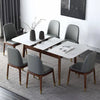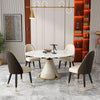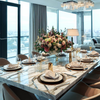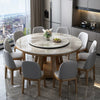What Makes Solid Wood Stand Out: The Ultimate Guide to Choosing Quality Wood Furniture

Introduction
When it comes to furnishing a home, the materials chosen can make all the difference in the atmosphere, longevity, and impact of each piece. In the realm of furniture making, a variety of materials are employed, ranging from metal and glass to engineered wood and plastics. Each material brings its own set of benefits and aesthetic appeals, but none holds a candle to the timeless elegance and inherent strength of solid wood.
Solid wood has long been revered as the premier choice for high-quality furniture, standing out for its durability, aesthetic versatility, and sustainability. Unlike veneers or engineered woods, which consist of thin layers of wood glued onto a cheaper material, solid wood furniture is crafted from single, solid pieces of wood. This not only contributes to its sturdiness and longevity but also showcases the wood's natural beauty through unique grain patterns, rich colors, and inviting textures.
Furthermore, in an era increasingly concerned with environmental sustainability, solid wood furniture offers a greener choice. Sustainably sourced wood not only reduces environmental impact but also supports responsible forestry practices. With solid wood, you're not just investing in a piece of furniture but in a piece of nature - one that adds warmth, character, and a touch of the outdoors to your indoor spaces.
As we delve deeper into the world of quality wood furniture, let's explore the unique qualities that make solid wood stand out. From its aesthetic appeal to its contribution to a more sustainable planet, solid wood furniture represents a wise choice for those looking to combine style, durability, and eco-friendliness in their home decor.
The Timeless Appeal of Solid Wood
The charm of solid wood furniture lies not just in its strength and durability but in its unparalleled aesthetic and natural beauty. This section delves into the unique characteristics that make solid wood a timeless choice for any interior.
Aesthetic and Natural Beauty
Solid wood stands out for its distinct grain patterns, rich colors, and inviting textures. Each piece of solid wood furniture is unique, bearing the marks of its natural origin. These characteristics ensure that no two pieces are exactly alike, offering a personalized touch to any space. The unique grain patterns of woods like oak, walnut, and cherry add depth and character, while the variety of colors and textures available can complement any design palette. Solid wood's ability to add warmth and character to any space is unmatched, making it a favorite among those looking to create cozy, inviting environments.
Versatility in Design
One of the most remarkable attributes of solid wood is its adaptability to various design styles. Whether your home exudes a rustic charm, a contemporary sleekness, or a traditional elegance, solid wood furniture can be crafted to enhance your space's aesthetic. This versatility is evident in the wide range of furniture pieces available in solid wood, from sturdy oak dining tables that anchor a room with their robust presence to elegant walnut cabinets that add a touch of sophistication.
- Rustic settings benefit from the rugged, natural look of solid wood, with its visible knots and grain adding to the ambiance.
- Contemporary spaces are elevated with clean-lined solid wood pieces that highlight the material's natural beauty without overwhelming the modern aesthetic.
- Traditional decor is complemented by the classic elegance of solid wood furniture, with detailed craftsmanship adding a sense of timelessness.
Examples of solid wood's versatility are endless, ranging from sleek maple coffee tables that fit seamlessly into minimalist decor to ornate cherry bookcases that command attention in more classical settings. This adaptability not only makes solid wood a practical choice for various design needs but also ensures its place as a mainstay in home decor, transcending fleeting trends with its timeless appeal.
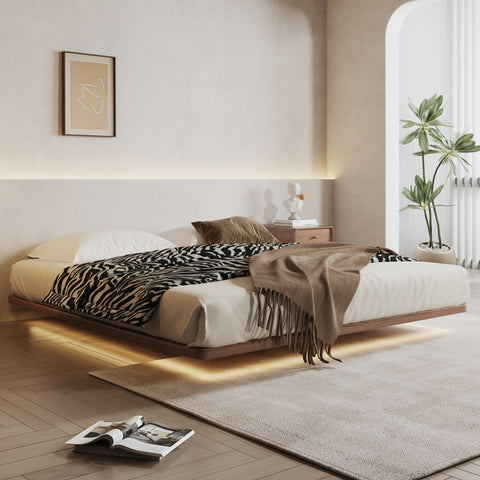
Durability and Longevity
Solid wood's reputation for durability and longevity is well-earned, distinguishing it from other furniture materials with its ability to stand the test of time. This section explores the built-to-last nature of solid wood and its graceful aging process, highlighting why it remains a top choice for those prioritizing quality and sustainability.
Built to Last
The inherent strength of solid wood sets it apart from alternatives like veneers and engineered woods. While veneers consist of a thin layer of hardwood attached to a less expensive base material, and engineered woods are made from wood fibers bonded with adhesives, solid wood offers unparalleled durability thanks to its complete, solid structure.
Comparison with Other Materials:
Solid wood's resistance to wear and tear surpasses that of veneers and engineered woods, which can suffer from peeling, chipping, and water damage over time. The solid nature of this material means it can withstand daily use much better, making it ideal for everything from dining tables to bookshelves.
Hardwoods vs. Softwoods: The type of wood also plays a crucial role in furniture's lifespan. Hardwoods, such as oak, maple, and cherry, are known for their density and durability, making them suited for high-traffic areas and heavy use. Softwoods, like pine and cedar, offer a softer but still durable alternative, though they may not endure as long under constant use. Choosing the right wood type can significantly impact the longevity and appearance of furniture over time.
Ageing Gracefully
One of the most cherished aspects of solid wood furniture is its ability to develop a patina over time, enhancing its beauty as it ages. This natural aging process brings out deeper colors and richer textures, adding to the piece's character and appeal.
Refinishing and Repair:
Unlike furniture made from other materials, solid wood can be sanded down, refinished, and repaired, allowing it to recover from scratches, dents, and wear. This not only extends the life of the furniture but also means it can be updated to match changing decor styles, making it a sustainable choice for those looking to invest in furniture that lasts.
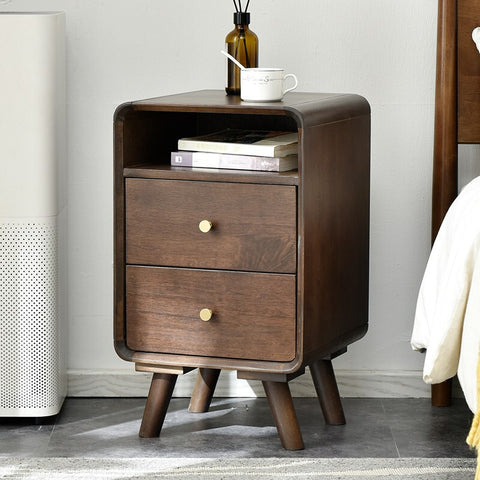
Sustainability and Environmental Impact
In today’s environmentally conscious world, the sustainability of home furnishings is a significant concern for many. Solid wood furniture stands out not only for its aesthetic appeal and durability but also for its positive environmental impact. This section explores how choosing solid wood furniture can contribute to a more sustainable and eco-friendly lifestyle.
Renewable Resource
Solid wood is celebrated for its eco-friendliness, especially when sourced sustainably. As a renewable resource, wood is capable of being replenished over time, unlike synthetic materials that rely on non-renewable petroleum and chemicals for production.
Sustainably Sourced Wood:
Ensuring that the wood used in furniture comes from responsibly managed forests is crucial. Certifications like the Forest Stewardship Council (FSC) and the Programme for the Endorsement of Forest Certification (PEFC) are key indicators of sustainably sourced wood. These certifications guarantee that the wood has been harvested in a way that conserves biodiversity, benefits the lives of local people, and sustains the economy.
Reducing Carbon Footprint
Solid wood plays a vital role in carbon sequestration, which is the process of absorbing and storing carbon dioxide from the atmosphere. Trees naturally capture CO2 as they grow, and this carbon remains stored in the wood even after it is harvested and made into furniture, effectively keeping it out of the atmosphere.
Environmental Impact Comparison:
When compared to synthetic materials, solid wood has a much lower environmental impact. Synthetic materials often require fossil fuels for production and emit significant amounts of greenhouse gases during manufacturing. In contrast, solid wood furniture production is less energy-intensive and, when sourced from sustainably managed forests, contributes to a cycle of growth, harvest, and replanting that can continuously sequester carbon.
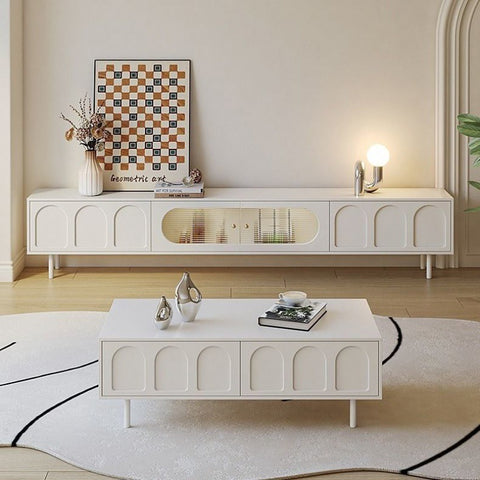
The Investment Value of Solid Wood
Selecting solid wood furniture isn't just a choice for the present; it's an investment in the future. This section delves into the cost versus value proposition of solid wood furniture and the unparalleled opportunities it offers for customization and showcasing craftsmanship.
Cost vs. Value
While the initial purchase price of solid wood furniture may be higher than that of pieces made from engineered wood or veneers, the long-term value it provides is incomparable. Solid wood's durability means that it can last for generations with proper care, reducing the need for frequent replacements and offering significant savings over time.
Resale Value:
Antique and well-maintained solid wood pieces often retain or even increase in value, making them not just purchases but investments. The market for vintage and antique wood furniture is robust, with collectors and enthusiasts willing to pay a premium for high-quality, unique pieces. This potential for appreciation in value contrasts sharply with most mass-produced furniture, which tends to depreciate rapidly.
Customization and Craftsmanship
One of the most significant advantages of solid wood furniture is the level of customization and craftsmanship it allows. Unlike mass-produced furniture, solid wood pieces can be tailored to fit specific dimensions, styles, and preferences, making each piece truly unique.
Handcrafted Uniqueness:
The craftsmanship involved in creating solid wood furniture means that each piece is imbued with the skill and passion of its maker. This attention to detail and quality is evident in the finished product, which can become a centerpiece of home decor and a point of pride for owners.
Customization Options:
Whether you're looking for a dining table to fit an unusual space, a bookshelf with specific dimensions, or a bed frame that matches your unique aesthetic, solid wood furniture can be customized to meet your needs. This flexibility allows homeowners to create spaces that reflect their style and personality, adding to the intrinsic value of each piece.

Solid Wood in Home Decor
Solid wood furniture brings more than just durability and sustainability to the table; it significantly enhances the elegance and style of interior spaces. Beyond aesthetics, incorporating solid wood into home decor can also have profound effects on wellness, aligning with principles of biophilic design by connecting occupants more closely with nature.
Enhancing Interior Spaces
The role of solid wood in home decor cannot be overstated. Its natural beauty and timeless appeal make it a versatile choice for any decorating style, from modern to traditional. Here are some tips for integrating solid wood furniture into various design themes:
- Mix and Match: Don't be afraid to mix solid wood pieces with other materials. The texture and warmth of wood can complement glass, metal, and fabric, bringing balance and cohesion to your space.
- Highlight Key Pieces: Use solid wood furniture as the focal point of a room, such as a large dining table or a statement-making bed frame. These pieces can anchor the room and set the tone for the rest of your decor.
- Consider the Wood Tone: Match the wood tone to the mood you want to create. Lighter woods can make a space feel airy and casual, while darker woods tend to add a touch of sophistication and formality.
Solid Wood and Wellness
Incorporating natural elements into our living environments, a design philosophy known as biophilic design, has been shown to improve mental and physical well-being. Solid wood furniture plays a key role in this approach by bringing the calming and restorative effects of nature indoors.
- Natural Connection: The presence of natural wood in interiors has been linked to reduced stress levels, improved mood, and increased feelings of warmth and comfort.
- Air Quality: Solid wood furniture can also contribute to healthier indoor air quality. Unlike some manufactured materials that can off-gas volatile organic compounds (VOCs), solid wood is a natural, non-toxic choice.
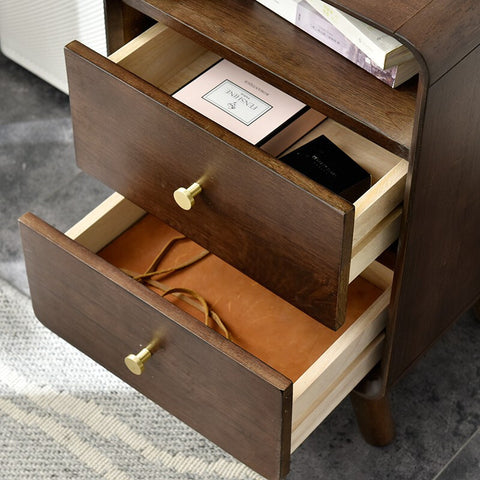
Choosing the Right Solid Wood
Selecting the right type of solid wood for your furniture is crucial for both aesthetic and functional harmony in your home. Each wood type offers unique properties and aesthetics, making understanding their characteristics and best uses essential. This section provides a comprehensive guide to popular woods and their applications, along with essential care and maintenance tips to keep your solid wood furniture looking its best.
Types of Wood and Their Properties
The choice of wood can dramatically affect the look, durability, and function of your furniture. Here's a breakdown of popular woods and their best uses:
- Oak: Known for its strength and durability, oak is a popular choice for pieces that require resilience, such as dining tables and bookshelves. Its prominent grain pattern adds character and warmth to any piece.
- Maple: With its light color and subtle grain, maple offers a contemporary look, making it ideal for modern furniture designs. It's also highly durable, perfect for heavy-use items like kitchen cabinets and flooring.
- Cherry: Cherry wood is prized for its rich, warm color that deepens with age. Its smooth grain makes it a favorite for elegant, high-end furniture pieces such as heirloom chests and dining room sets.
- Walnut: Renowned for its beautiful dark color and fine grain, walnut is often used in sophisticated, statement pieces. It's excellent for decorative items and furniture that showcases craftsmanship, like credenzas and headboards.
Matching Wood Types with Functionality:
Consider the piece's intended use and location when choosing the wood type. Hardwoods like oak and maple are suitable for furniture subjected to daily wear and tear, while woods with a finer aesthetic, like cherry and walnut, are better suited for statement pieces.
Care and Maintenance
Proper care and maintenance are key to preserving the beauty and longevity of solid wood furniture. Here are some essential tips:
- Cleaning: Dust solid wood furniture regularly with a soft, dry cloth. For deeper cleaning, use a damp cloth followed by a dry cloth to avoid water marks.
- Avoiding Damage: Protect wood surfaces from scratches by using coasters under beverages and felt pads under decorative items. Prevent water rings by wiping up spills immediately.
- Sun Fading: Position furniture away from direct sunlight or use window coverings to minimize sun fading. Regularly rotating the piece can also ensure even exposure.

Overcoming Common Misconceptions
Solid wood furniture, despite its many advantages, is often surrounded by misconceptions that can mislead consumers. Let's address and debunk some of the most common myths, providing clear, factual information to help readers make informed decisions.
-
Myth: Solid Wood Furniture is Too Expensive
- Reality: While solid wood furniture may have a higher upfront cost compared to pieces made from engineered wood or other materials, its durability and longevity offer incredible value over time. Instead of needing frequent replacements, solid wood pieces can last generations, making them more cost-effective in the long run. Additionally, the resale value of solid wood furniture can significantly offset its initial cost.
-
Myth: Solid Wood Requires High Maintenance
- Reality: Solid wood furniture does require some care to maintain its beauty, but it's not as high maintenance as some may think. Regular dusting and occasional polishing are typically all that's needed to keep wood furniture in top condition. Moreover, solid wood's ability to be refinished and repaired means that wear and tear can often be easily remedied, unlike furniture made from other materials.
-
Myth: All Wood Types are the Same
- Reality: There's a wide variety of wood types used in furniture making, each with its unique properties, colors, and grain patterns. Hardwoods like oak and walnut are known for their durability and are often used in high-traffic areas or pieces that require strength. Softwoods, like pine, offer a more cost-effective option for pieces not subjected to heavy use. Understanding the characteristics of different woods can help in selecting the right furniture for your needs and ensuring its longevity.
-
Myth: Solid Wood Furniture is Not Eco-Friendly
- Reality: When sourced responsibly, solid wood is one of the most sustainable materials available for furniture making. It is renewable, biodegradable, and can be recycled. Furthermore, wood furniture plays a role in carbon sequestration, helping to reduce the carbon footprint associated with furniture production. Look for certifications like FSC or PEFC to ensure wood is sourced from well-managed forests.
Conclusion
As we conclude our journey through "What Makes Solid Wood Stand Out: The Ultimate Guide to Choosing Quality Wood Furniture," it's clear that the unique qualities of solid wood—its durability, timeless beauty, versatility in design, and sustainability—make it an unparalleled choice for furnishing your home. The investment in solid wood transcends mere aesthetics; it's an investment in a sustainable, enduring legacy that enhances both your living space and the environment.
Solid wood furniture, with its rich textures, natural beauty, and the craftsmanship behind each piece, stands not just as a functional element of home decor but as a testament to quality and style. Whether you're drawn to the warmth of oak, the depth of cherry, the elegance of walnut, or the brightness of maple, solid wood furniture adds unmatched character and elegance to any room.
Recognizing the benefits of solid wood—its ability to age gracefully, its potential for customization, and its contribution to a healthier planet—we encourage you to consider the long-term value and beauty it brings to your home.
Ready to elevate your home with the beauty and durability of solid wood furniture? We invite you to explore our solid wood dining table collection. Discover pieces that not only serve as the foundation for your family gatherings but also embody sustainable style and quality.
For personalized guidance or to explore our range further, reach out to our craftsmen or visit our retailers. Our team is eager to help you select solid wood pieces that reflect your personal style, fulfill your functional needs, and enhance your home for generations to come.
FAQs
-
What Makes Solid Wood Furniture a Sustainable Choice? Solid wood furniture is considered sustainable due to its sourcing from renewable forests, its durability which reduces the need for frequent replacements, and its ability to be recycled or repurposed. Look for pieces with certifications like FSC or PEFC to ensure the wood is responsibly harvested.
-
How Do I Choose Between Different Types of Solid Wood? Choosing between different types of solid wood depends on your aesthetic preferences, the furniture's intended use, and your budget. Hardwoods like oak and walnut offer durability for high-traffic areas, while softer woods like pine may be more budget-friendly for decorative pieces.
-
Can Solid Wood Furniture Be Repaired If It Gets Damaged? Yes, one of the significant advantages of solid wood furniture is its ability to be repaired and refinished. Scratches, dents, and water marks can often be sanded down and refinished, restoring the piece's beauty and extending its lifespan.
-
How Can I Protect My Solid Wood Furniture From Damage? Protect solid wood furniture by using coasters under drinks to prevent water rings, placing felt pads under objects to avoid scratches, and keeping the furniture away from direct sunlight to prevent fading. Regular dusting and the occasional use of appropriate wood cleaners can also preserve its appearance and durability.
-
Is Solid Wood Furniture Worth the Investment? Despite its higher initial cost, solid wood furniture is often worth the investment due to its longevity, timeless appeal, and potential to increase in value. Quality solid wood pieces can last for generations, making them more cost-effective over time compared to cheaper, less durable alternatives.


